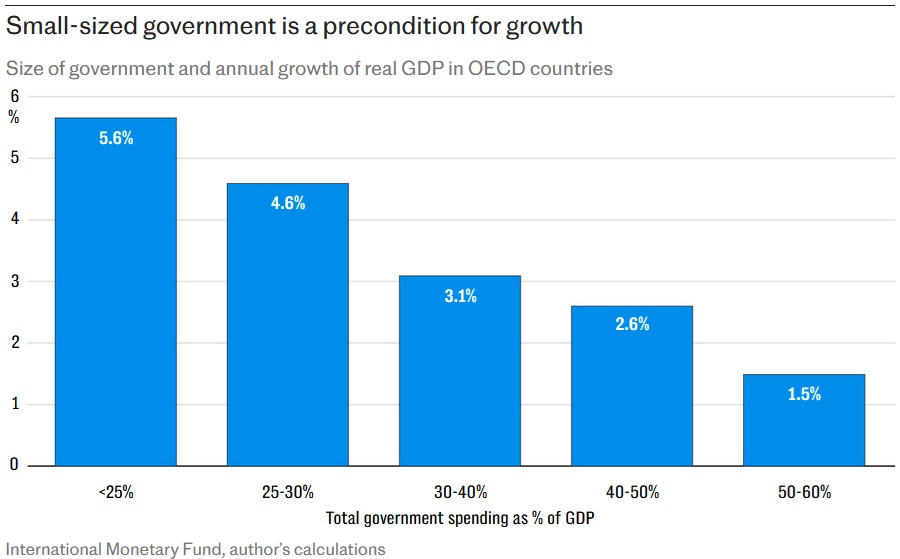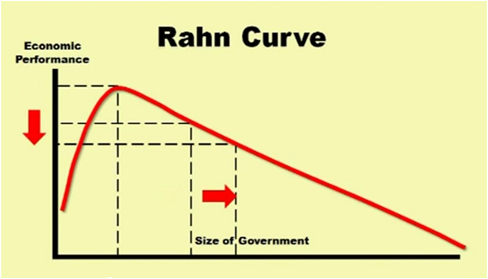It’s been a while since I shared this video about the Rahn Curve (or Armey-Rahn Curve), so let’s watch this Golden Oldie from 2010.
The insight of the Rahn Curve (sort of a spending version of the Laffer Curve) is that economic performance declines once government exceeds a certain level.
Most of the research suggests growth is maximized when government spending consumes about 20 percent of GDP,* though I firmly believe that historical data shows the spending burden should be significantly lower.
That being said, the burden of government is so large in the United States and other nations that I’d be delighted if we ever got back to a budget that only consumes 20 percent of GDP. Especially since official projections show government will get even bigger.
As shows by this chart, that bigger burden of government will be very costly to prosperity (the World Bank has research showing the same relationship).

The chart comes from a column in the U.K.-based Telegraph. Written by Jon Moynihan, it explains that a growing burden of government is hampering British prosperity.
But change a few words and numbers, and it could be an article about the United States. Here are some excerpts.
Growth (and particularly growth per capita, the most important metric) has collapsed in the UK and the European Union… Why? Because social democracy…is inimical to economic growth. …growth-destroying features of the social democratic experiment are bigger government, higher taxes, and an ever-shrinking private sector to get those taxes from. It’s a pattern with only one eventual outcome: national bankruptcy. …Labour’s policies are bad, in many ways they are just a continuance of a social democratic experiment that’s been pursued by successive governments, including Conservative ones, over the past 30 years. …the brain drain has started up again, with young high-earners fleeing to the US, Australia, Dubai and elsewhere. …the three key devils that prevent growth are first a too-large, unaffordable level of government expenditure…second, too high a level of taxation…and finally, larger and ever-increasing regulation. …Other countries, like Switzerland and Singapore, are showing us there is no limit to the economic growth that a country can achieve if you rein in the state.
Singapore and Switzerland are two good examples. At least compared to North America and the rest of Europe.
There is one final excerpt from Moynihan’s column that deserves attention. The ratio of “makers” to “takers” is very important.
…if the public sector is sucking up 25pc of GDP, three private sector workers can divide up the burden of carrying one public sector worker or beneficiary, but at 50pc of the economy, each single private sector worker has to carry that burden of the public sector worker or beneficiary. How well is that likely to work out?
I’ll close with the depressing observation that things will get worse before they get better (if they ever get better) in the United Kingdom.
And the same is true in the United States.
*How government spends money can be just as important as how much money is spent. Estimates of the growth-maximizing size of government are based on the assumption that “public goods” are the first things that are financed, which means potentially growth enhancing activities such as a sound legal system and rule of law. In other words, the things that are associated with the upward-sloping portion of the Rahn Curve. But as governments grow in size, the assumption is that they start spending money on various entitlement programs and different types of subsidies, and these are things associated with weaker economic performance and the downward-sloping portion of the Rahn Curve.
———
Image credit: Andy Withers | CC BY-NC-ND 2.0.



